LG's VR HMD Shows High-End Promise, May Offer Mixed Reality
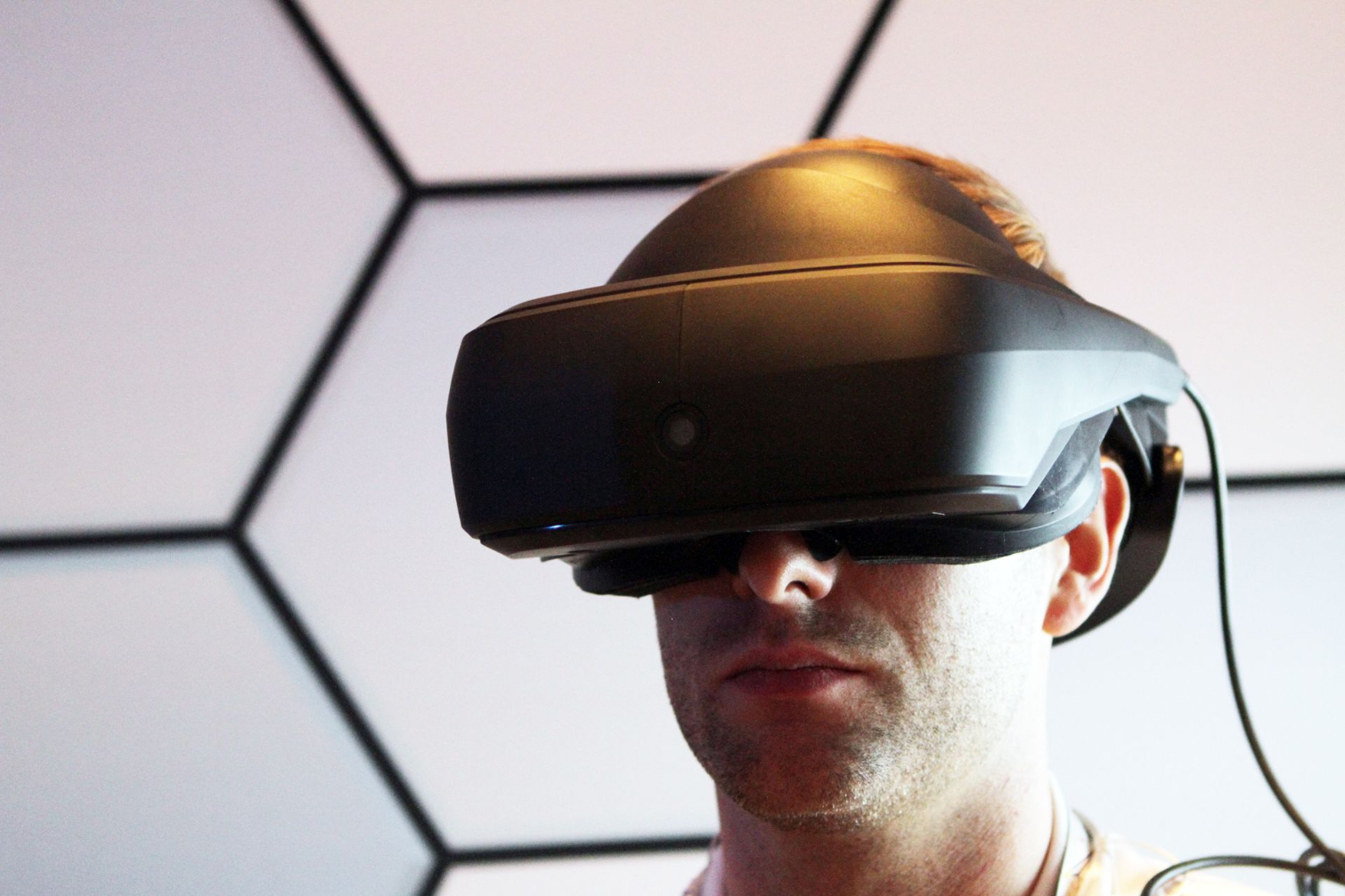
Just before GDC, we received a non-announcement announcement that LG is making a VR HMD. Details were sparse, to say the least, but we had the chance to go hands-on with the device. It’s still a prototype, but it performs wonderfully as is, and it will most likely offer a mixed reality environment of some kind via passthrough cameras when the final version comes to market.
The Prototype
The current iteration of LG’s VR HMD is PC-connected, just like the Rift and Vive. It has an OLED display (made by LG) that’s 3.64 inches on the diagonal. It offers 1440x1280 resolution per eye (540ppi) and sports a 90Hz refresh rate. Notably, that resolution is higher than the 1200x1080 resolution of both the Rift and Vive.
The device’s headstrap setup is reminiscent of the HoloLens, and the front of the HMD can slide forward and up, making it exceptionally easy to peek into the real world when necessary and also to take the thing on or off. When you snug it to your face, you tighten the hard plastic straps with a dial on the back to keep it tight.
This design also makes the HMD adjustable. You can slide the front forward or backward 40mm depending on your comfort level, and whether you’re wearing glasses. How far you have the front assembly slid forward affects the field of view. At 12mm (which we infer from talking with LG is the shortest lens-to-eye distance it offers), the FoV is 110 degrees. That’s as good or better than the Rift, Vive, and PSVR, at least on the horizontal. The further out you go, the more the FoV will be reduced.
We were also told that the lenses are refractive, not the Fresnel lenses that Vive and Rift both use. We were told no more than that, and LG politely asked us not to shoot any pictures of the lenses from too close up.
There’s a headphone jack, too. In our demos, LG plugged in generic headphones for the audio.
The LG VR HMD runs SteamVR, and it uses Lighthouse base stations (though LG-branded) as the Vive to achieve room scale tracking. LG did not comment on the content issue, but we infer that you can play any Vive game on this device.
Get Tom's Hardware's best news and in-depth reviews, straight to your inbox.
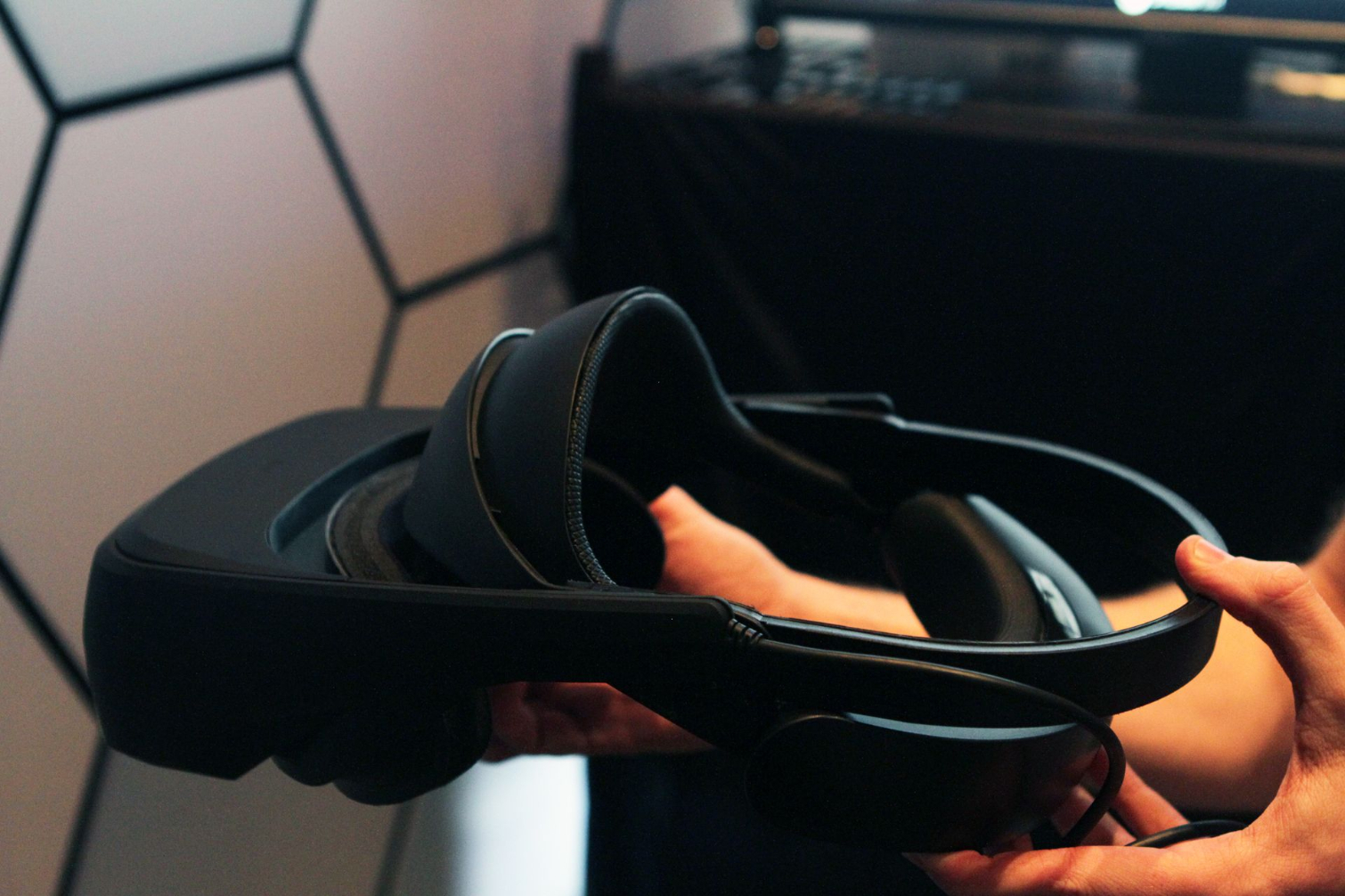
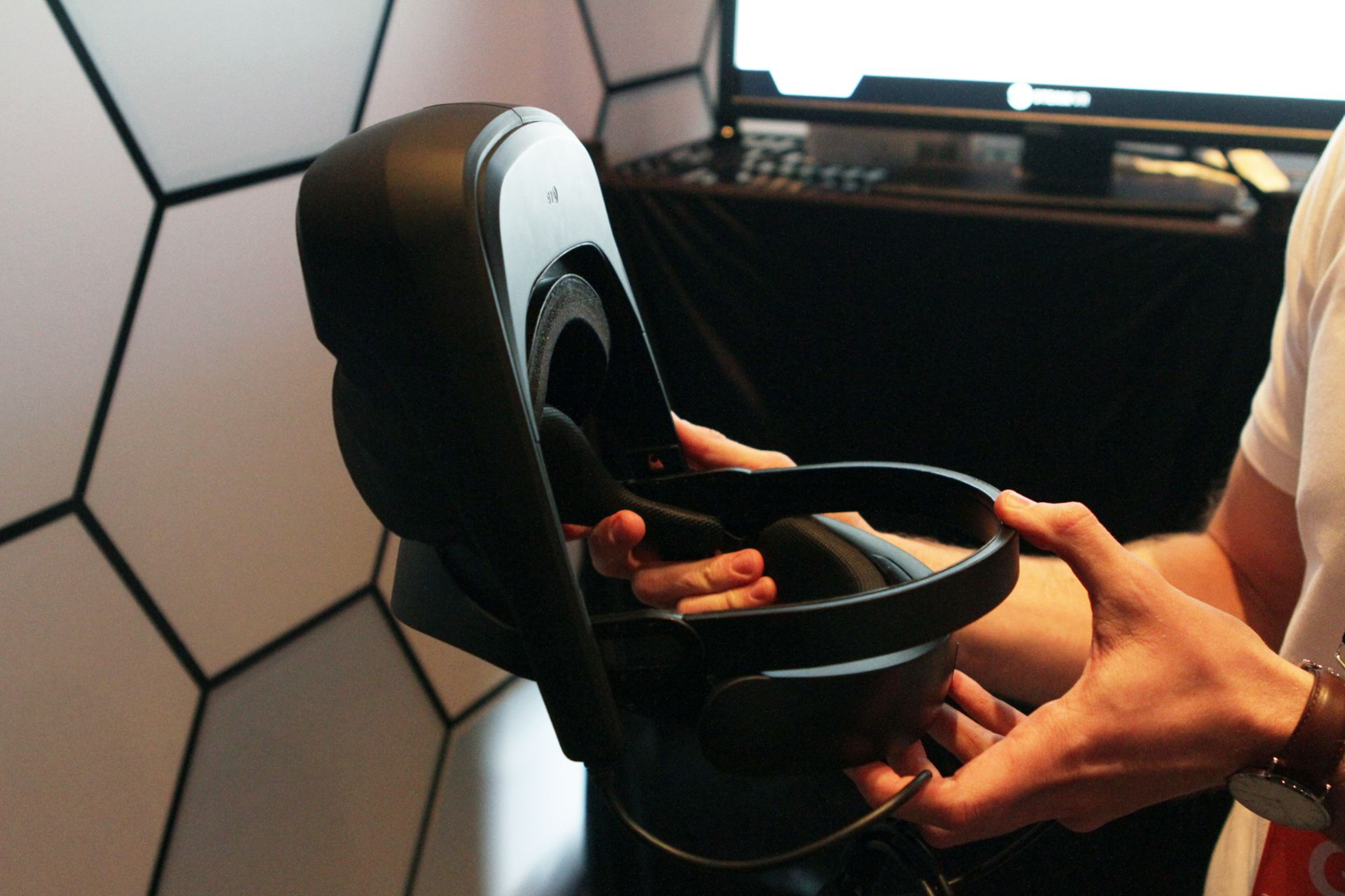


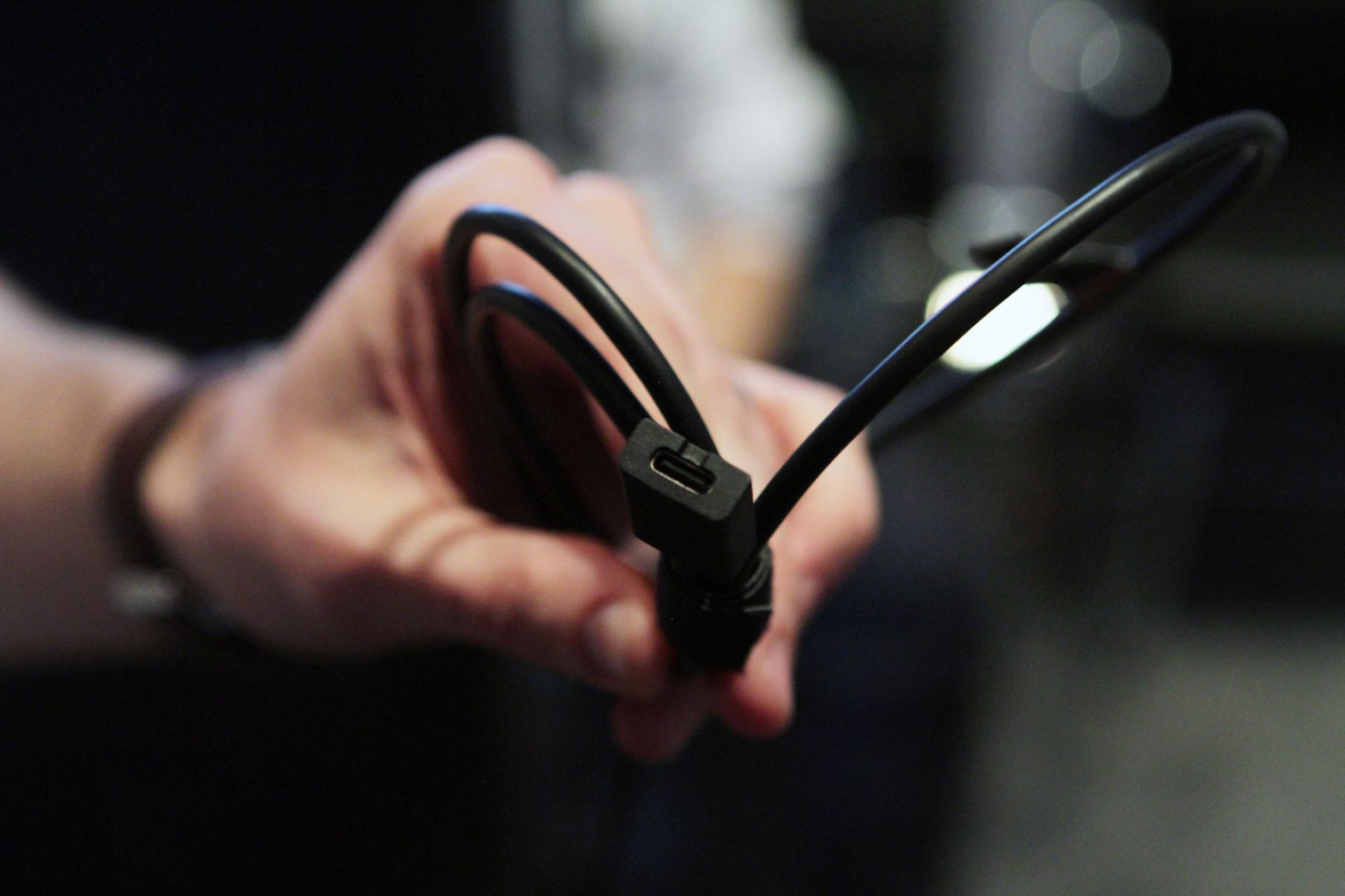

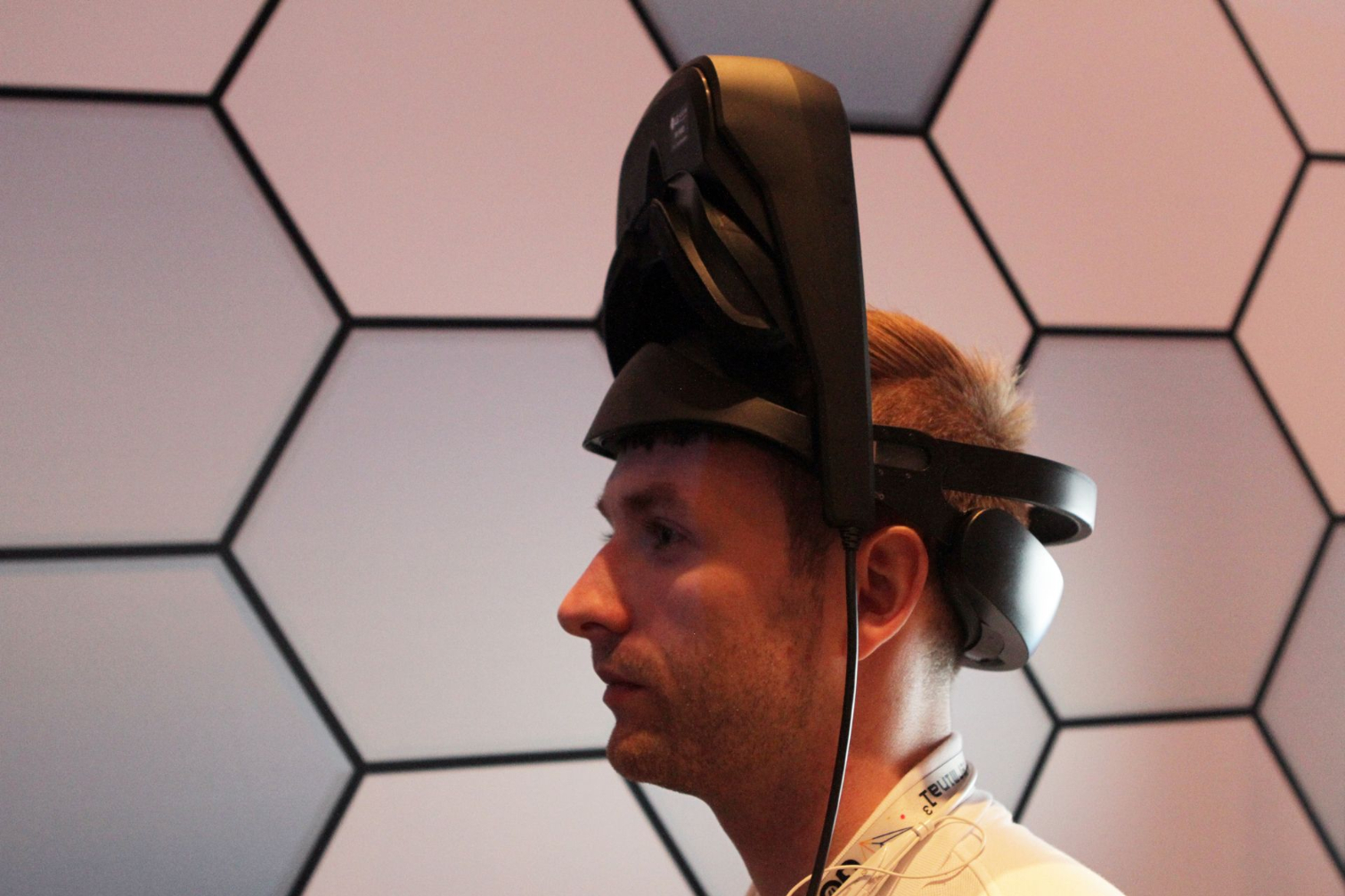

Mixed Reality And More?
There is much about this HMD that LG has not finalized, and there will be some key features in the final product that aren’t present on this prototype. One that seems to be a shoo-in is a pair of passthrough cameras on the front of the HMD. This current design even has dummy holes for them (if you look closely, you can see that there are no cameras mounted in there yet).
The obvious use for passthrough cameras is mixed reality; what’s less obvious is what that means and how it will be implemented. For example, LG may simply use them to let you toggle on a “real world view” when you need to check your surroundings. On the other hand, they may be a precursor to inside-out tracking that would let LG do away with the Lighthouse trackers. Ostensibly, they could also be used to toggle between a fully occluded VR environment and a mixed reality one, as Vrvana’s Totem does, or to create merged reality, as Intel is doing with Project Alloy.
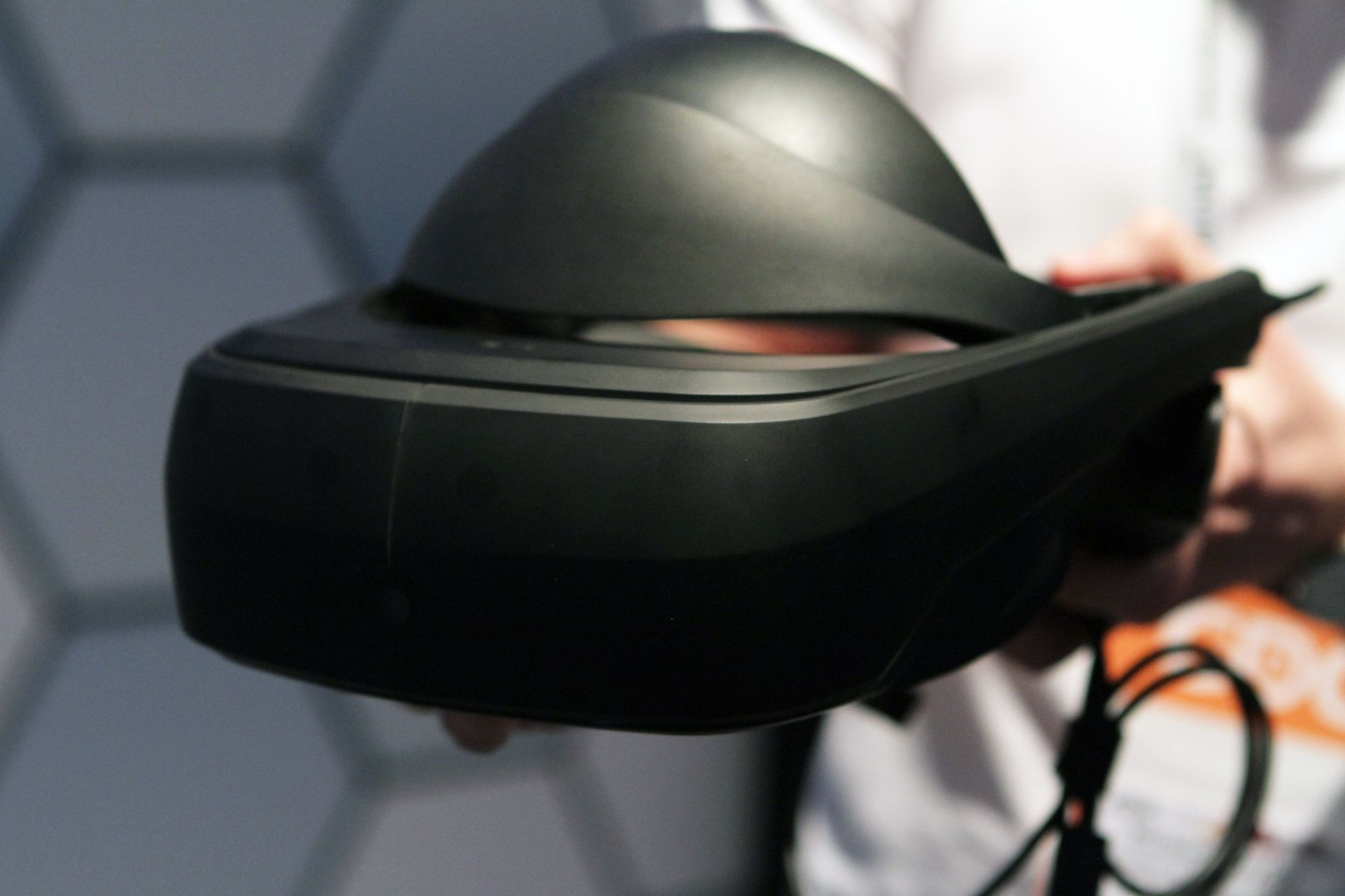
Of course, LG could also cut the passthrough camera from the final design altogether.
LG said that we should expect the shipping HMD to be lighter than the prototype, and it may also have a higher-resolution display.
Synecdoche Hand Controllers
The HMD has two hand controllers, and they look almost identical to the Vive controllers, but there are some slight differences--which felt a little odd. For example, LG’s design has an angular look compared to the more rounded Vive controllers.
LG also added another button to the top of the controller. An LG rep said that they noticed that many devs liked to add functionality in pairs--such as offering both forward and backward movement--and so it put two equidistant buttons on either side of the touchpad. LG also tightened up the button placement a bit so everything is closer together.
The two demos we saw made minimal use of the controllers and no use of the buttons, so it’s difficult to evaluate whether or not those design tweaks make a difference.
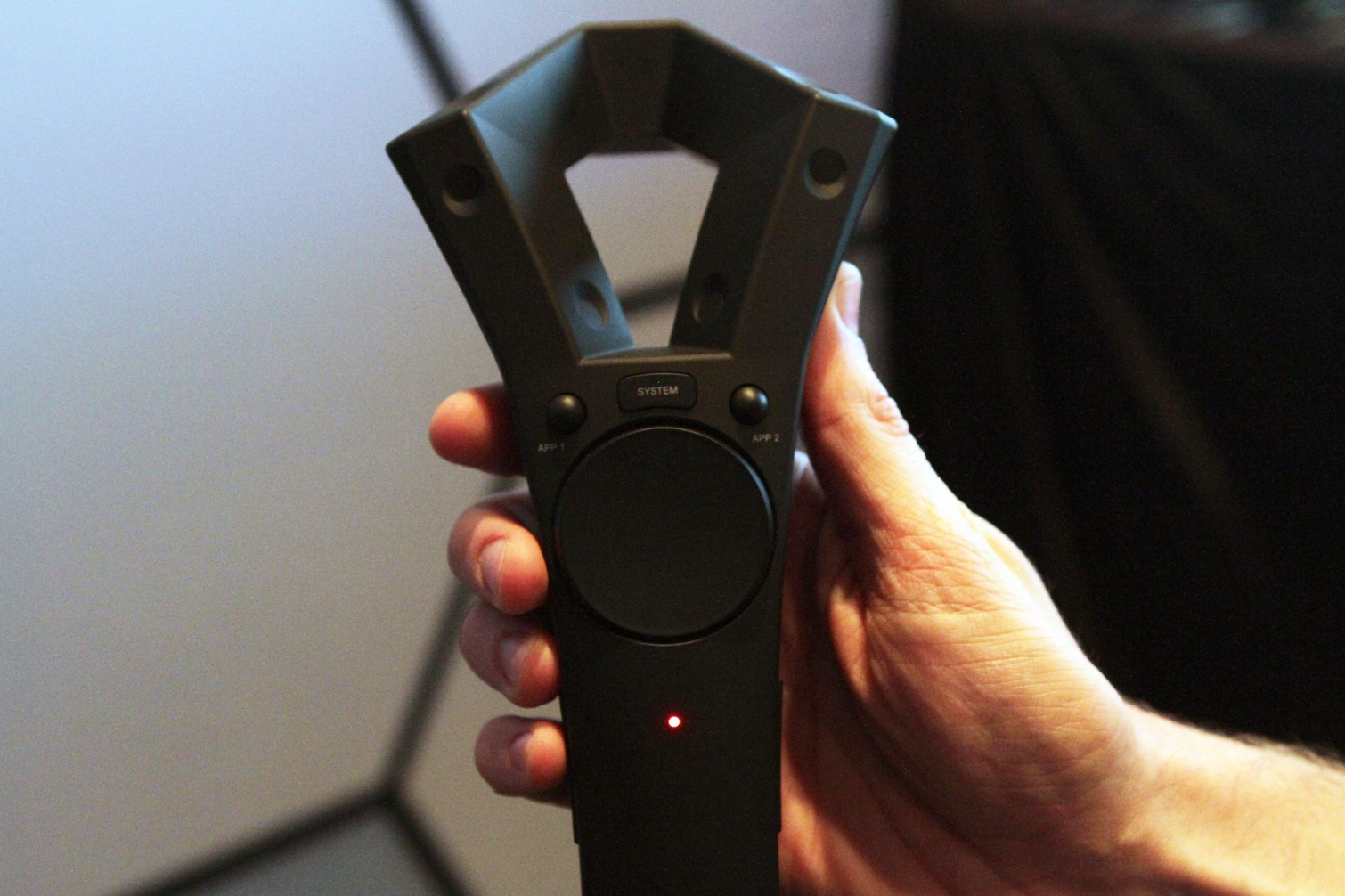

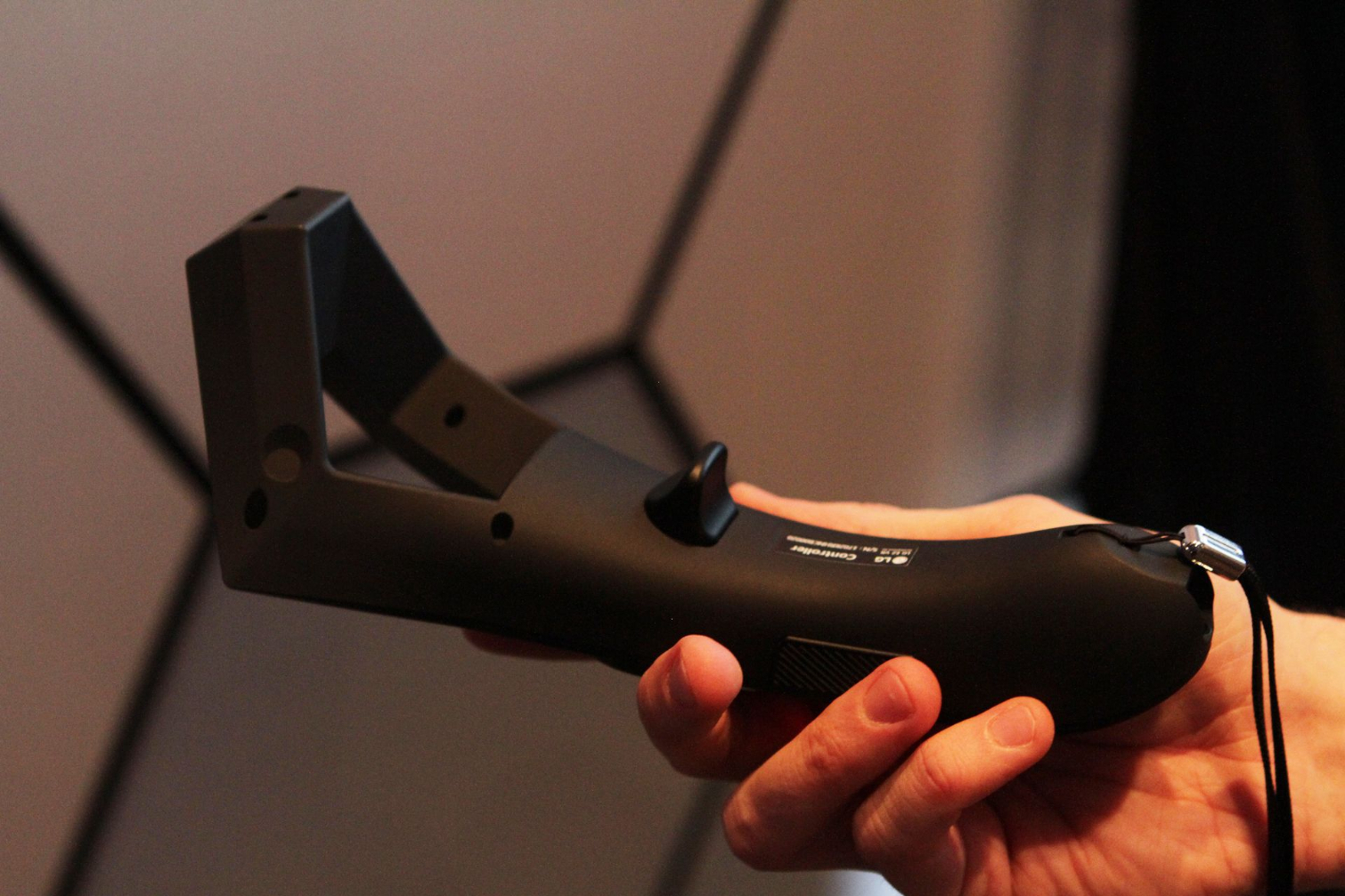
The Demos: A Fire Dancer And Space Ping Pong
LG showed us two short demos. In one, you’re a passive observer, and in the other, you interact with the environment. For the record, both were superb.
In the first one, you’re greeted by a dancer--she was an avatar, mostly black but drawn with bright orange lines, but her movements were so fluid and graceful that it had to have been created by motion capture. She created this sparky, streaming 3D trail of flame wherever she moved. She dances all around you, so you have to keep spinning in place to keep track of her. It reminded us a little of Tilt Brush, if the artist was a dancer and her palette was fire.
The best way we can think of to describe the second demo is space ping pong. You’re ensconced in a spherical metal room, standing on a platform. A paddle appears in your right hand, and you have to whack a glowing orb at the wall. When your ball hits a glowing green panel, you get points. The ball comes at you fast--so fast that you can’t look the ball into the paddle (which is why I whiffed on several swings, or at least that’s my official excuse).
Why?
When we asked the LG rep on hand why the company was making an HMD in the first place, he sighed a little and noted that he was getting that question often. But his answer is, frankly, why not? He astutely noted that LG already possesses IP and expertise around the display and optics technology, and it wanted to leverage that for VR, and so it worked with Valve to build the HMD.
Indeed, Valve is the ODM for both the headset and the controllers; it basically adapted its existing technology to fit the designs that LG requested. If you think about it, this actually makes plenty of sense. Although it may seem as though Valve is betraying HTC by helping to build a competitor, shouldn’t we have always expected Valve to work with multiple hardware makers? We incorrectly conflate Valve and HTC when it comes to the Vive because of how closely the two have worked together on it, but of course, they’re entirely separate companies. (It also raises the question of how much of the Vive’s IP comes from Valve.)
There’s no word on availability or pricing, and that’s because LG hasn’t even finished designing the final version. The company was clear that it’s soliciting feedback from the VR world at GDC before it makes its final plans.
A Competitor Emerges
Everything we saw in the demos was vivid, smooth, pretty, and electric. The visuals were stunning. Based solely on those few minutes, the LG VR HMD prototype looks every bit as good as the Rift and Vive. Whatever the final version of the LG VR HMD becomes, early indications point to this HMD as another competitor in the high-end VR HMD market.
Seth Colaner previously served as News Director at Tom's Hardware. He covered technology news, focusing on keyboards, virtual reality, and wearables.
-
grimfox Sounds like it could be a leader of the second gen headsets. It's one of the first, to my knowledge, from a larger well known company targeting the high end. I think because it's coming from LG and they are working with valve/steam it could give them a solid boost over some of the other second gen headsets. Being a larger established company they'll have fewer production issues, supply chain issues, more ergonomics experience, better product support. The list goes on.Reply -
c4s2k3 Reply19372797 said:It uses lighthouse... Not inside out tracking. So MR is unlikely.
First of all, let me apologize for downvoting your comment. I was using the iPad and accidentally touched that icon, and found no way to reverse that :/
What I was trying to do was add that lighthouse would likely be needed to track the controllers. -
scolaner Reply19372797 said:It uses lighthouse... Not inside out tracking. So MR is unlikely.
That's a good point, but then why the front camera placeholders? LG was clear that it has not finalized designs and plans. It's half-baked at this point. They knew what they wanted to do with the optics, and my first impression is that they did a great job on that, but they're still sort of on the drawing board with everything else.
-
bit_user Reply
I think MR is still useful without inside-out tracking. I'm sure we've seen at least one other AR HMD that's tied to a PC, but I forget the name.19388340 said:
That's a good point, but then why the front camera placeholders?19372797 said:It uses lighthouse... Not inside out tracking. So MR is unlikely.
Anyway, two holes just isn't enough to switch over to inside-out. Look at everyone who's doing this, seriously, and you'll see an array of cameras and depth sensors spanning at least three sides of the unit. This is necessary, otherwise you'd have to make users hang posters on their walls or something else for the forward cameras to track.
BTW, a slightly-better "me too" isn't what we need. This really needs to be wireless. That'd be a Vive killer, for sure.
